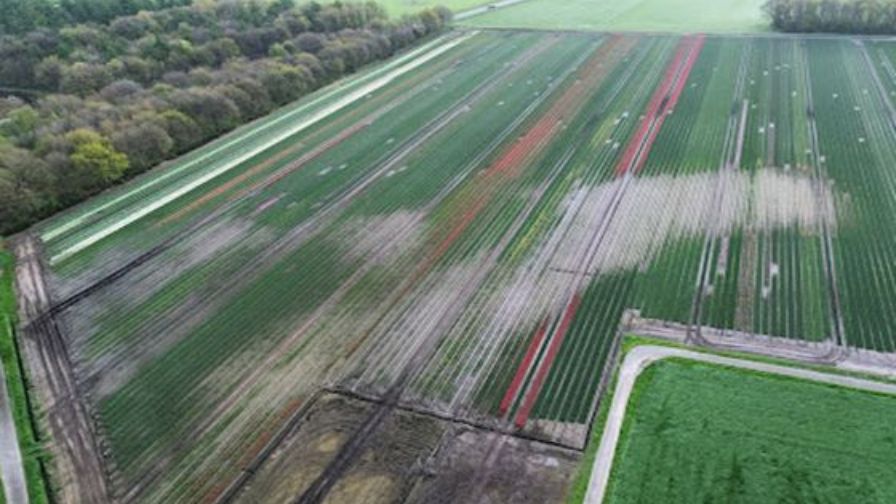
Drone image showing water damage to tulip fields in the Netherlands | De Vroomen Garden Products
De Vroomen Garden Products has released an update on recent developments in the flower bulb market. The 2024 harvest season brought significant challenges due to extreme weather conditions in the Netherlands, resulting in a substantial decline in flower bulb production, particularly tulip bulbs.
Extreme Weather Conditions and Harvest Issues
In the Netherlands, the fall of 2023 saw unusually high rainfall, causing many flower bulbs to be planted late. This led to delayed rooting and increased vulnerability of the bulbs. Persistent rainfall and hailstorms in the spring of 2024 caused significant damage and promoted diseases, affecting the quality of the bulbs. Although damage was evident on the fields, the full extent became clear only during the harvest in June/July 2024, resulting in an extremely low yield and smaller bulb sizes.
Tulip Bulbs Are Among Those Most Affected
Tulip bulbs have been particularly impacted by these conditions due to their sensitivity to planting timing and growing conditions. They are especially vulnerable to fluctuations in temperature and moisture compared to other bulb types.
Short-Term and Long-Term Implications for the Market
Due to the adverse weather conditions, the industry was only able to source 80% of the required tulip bulbs. What was initially expected to be a 20% shortfall has now grown to around 30%. Acquiring additional bulbs at normal prices is virtually impossible, with prices having doubled or even tripled. This scarcity is likely to pose challenges in the coming seasons as both the quantity and quality of planting material for the next season are reduced.
The Flower Bulb Growing Process Explained
In the fall, young bulbs, also known as planting stock, are planted in the fields and covered with straw. In the spring, the fields bloom briefly. After a short flowering period, the flowers are removed, allowing all energy to be directed towards the bulb’s development. The remaining stems and leaves die back and provide nutrients to the bulb, which then continues to grow.
From June to August, the mature bulbs are harvested for trade. At the same time, new planting stock is prepared for the next season. This annual process ensures a continuous supply of flower bulbs.
Preparing for the Reduced Availability of Flower Bulbs
For now, De Vroomen advises placing orders for the next season as early as possible to have the best possible chance at optimized availability. In the event selected bulbs are not available, suppliers can provide alternative bulbs and work closely to meet customer needs.

